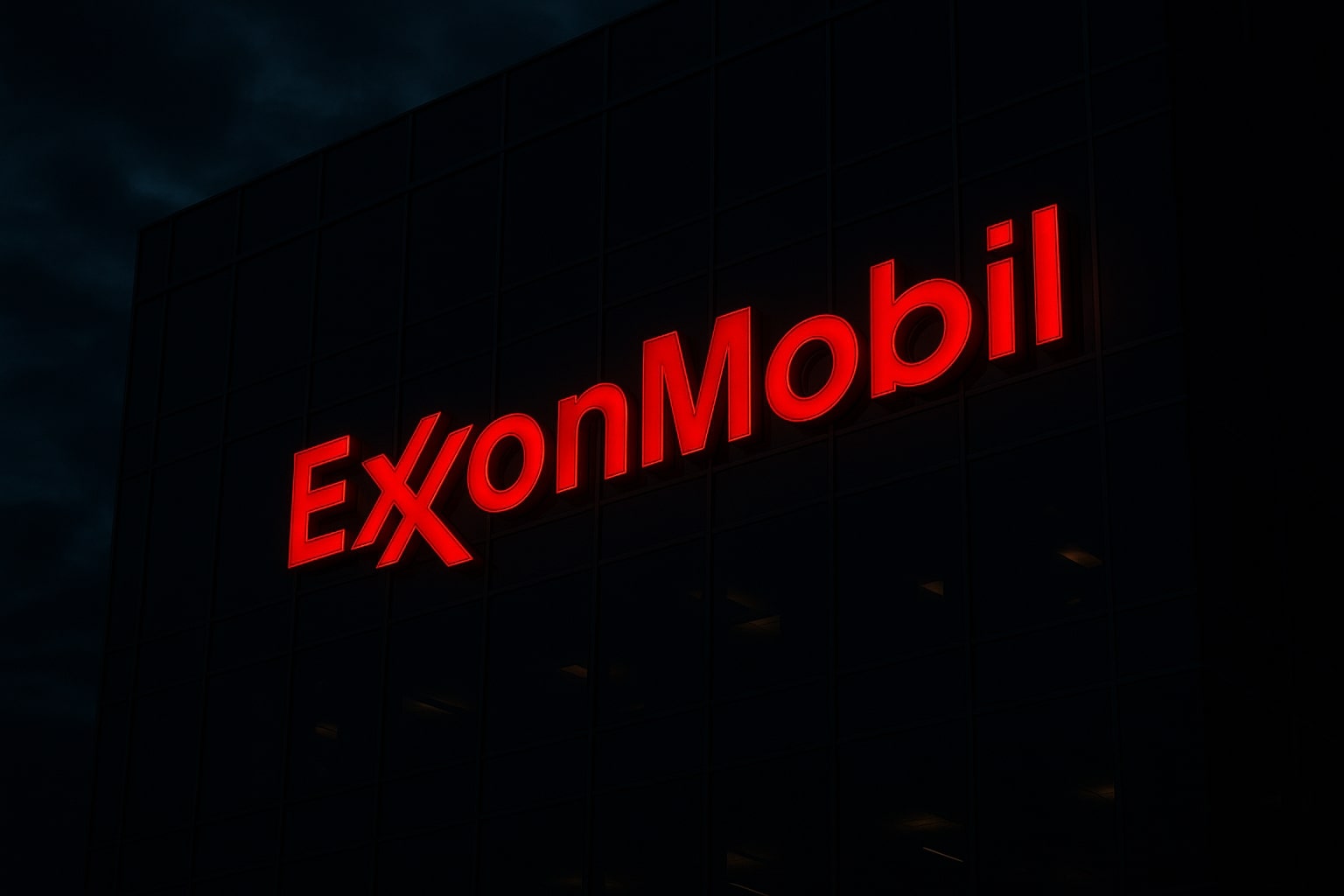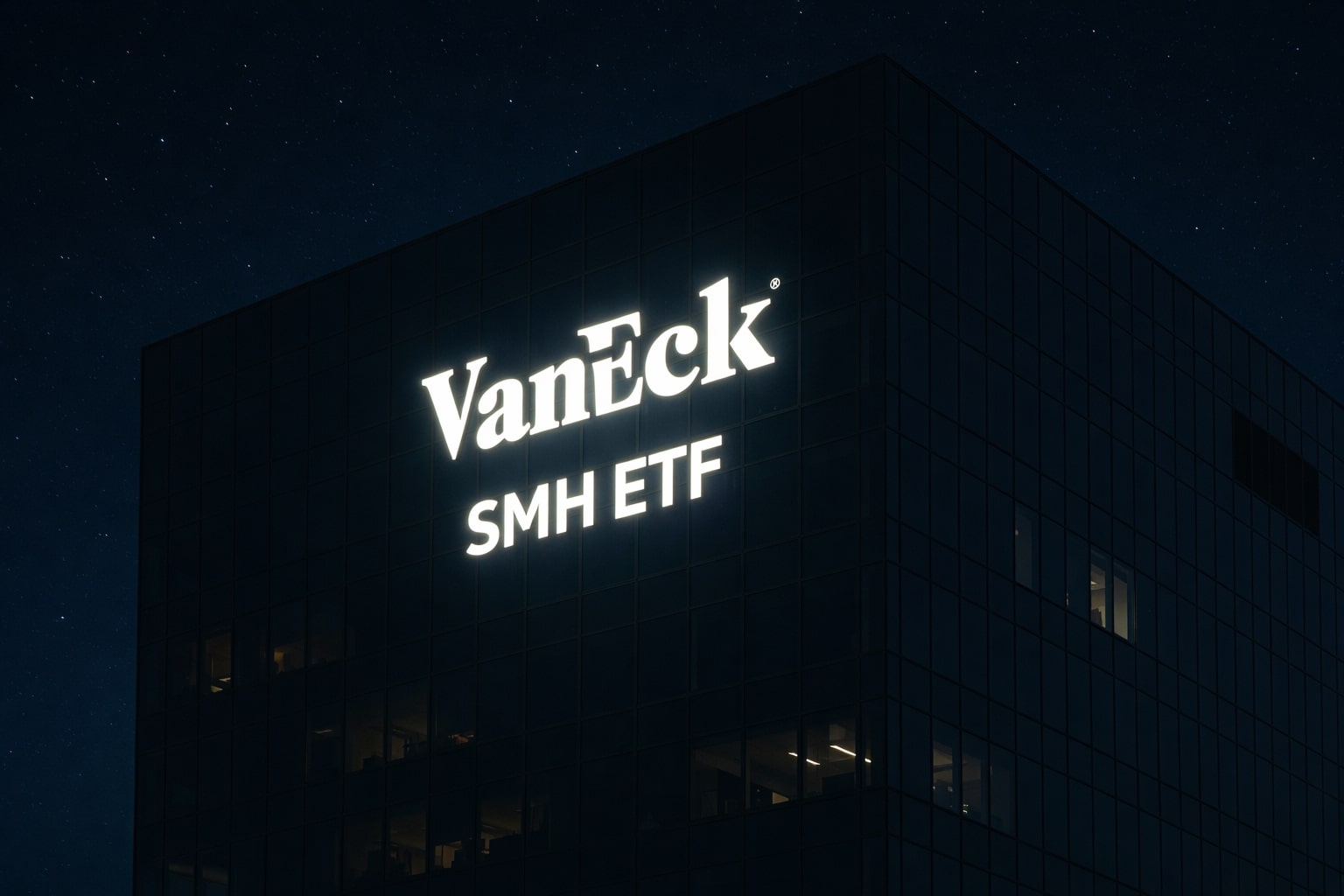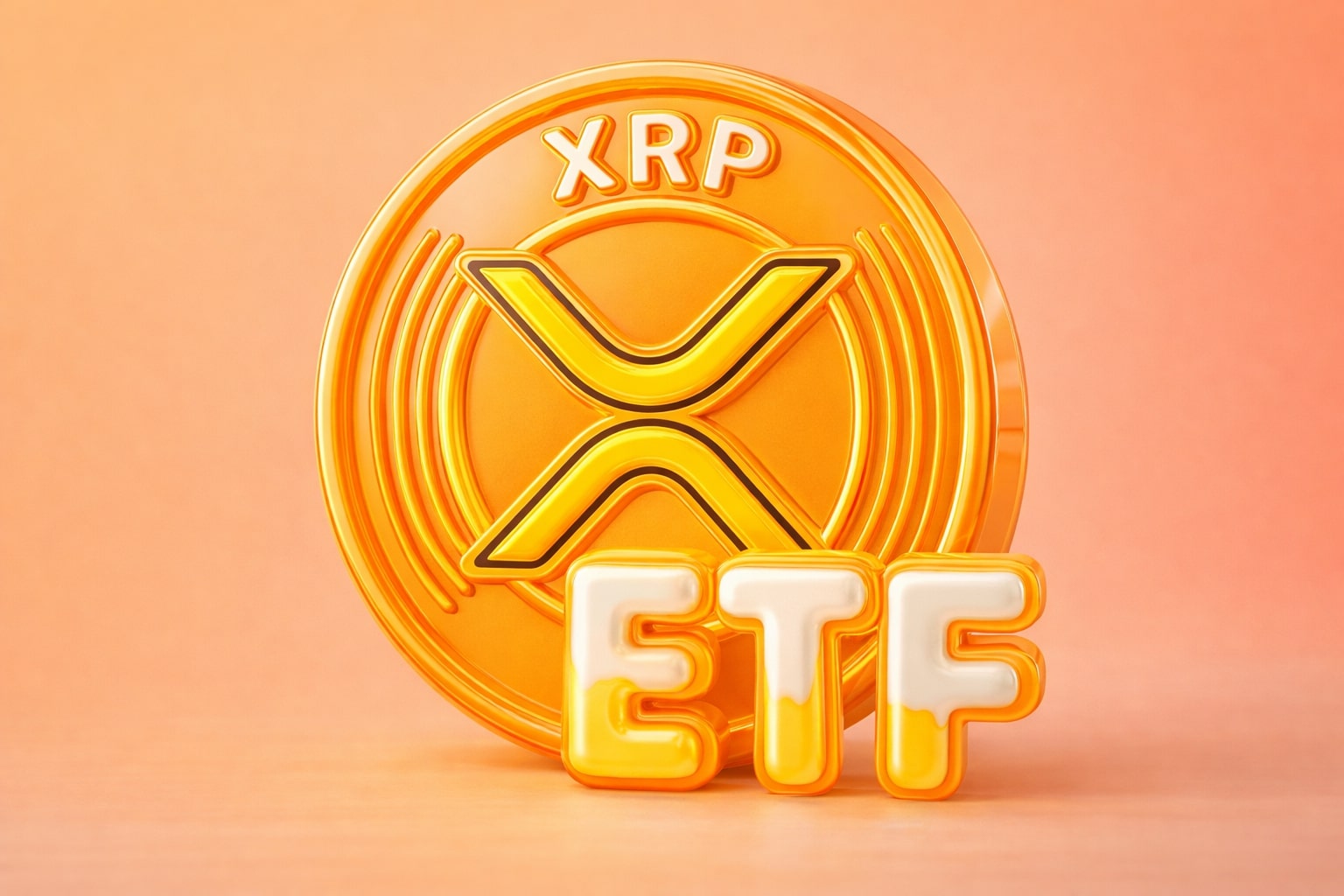
Exxon Mobil Stock Price - XOM Surges on Record 4.77M bpd, Dividend Climbs to $1.03
Shares at $114.36 hold strong as Exxon Mobil outperforms forecasts with record Guyana and Permian production, $14B in cost cuts, $27.8B in shareholder returns, and a dividend hike | That's TradingNEWS
Exxon Mobil (NYSE:XOM) Delivers $85.3B Quarter as Guyana and Permian Output Hit Records
Real-Time Chart →
Exxon Mobil (NYSE:XOM) closed its third quarter with $85.3 billion in revenue and $1.88 earnings per share, surpassing consensus expectations of $1.82 EPS. Net income reached $7.55 billion, down from $8.61 billion last year as crude prices softened roughly 16% year-to-date, with Brent averaging $68.17 per barrel. Despite a weaker pricing backdrop, Exxon’s operational momentum remains unmatched — production soared to 4.77 million barrels per day, fueled by new capacity from the Yellowtail project in Guyana and record throughput in the Permian Basin. The company’s disciplined execution and cost control underscore how it continues to outperform peers even in a lower-price environment.
Record Output Across Core Assets: Guyana and Permian Drive Growth
Exxon’s production surge stems from two strategic powerhouses: Guyana and the Permian Basin. Output in Guyana exceeded 700,000 barrels per day, driven by the Yellowtail project, which launched four months ahead of schedule with a 250,000 bpd capacity. In the Permian, production climbed to a record 1.7 million barrels of oil equivalent per day (boe/d), aided by new acreage acquisitions totaling 80,000 net acres in the Midland Basin. These two regions now account for more than 50% of Exxon’s total production, expected to grow toward 60% by 2030, positioning the firm to hit 5.4 million boe/d globally by the end of the decade.
Operational Innovation: Technology Raises Well Recovery and Product Efficiency
Exxon’s proprietary lightweight proppant technology has improved well recovery rates by up to 20%, a margin-expanding advantage as it’s deployed across roughly 50% of new wells by 2026. On the product side, Proxima-based solutions have tripled output capacity and enhanced installation efficiency for rebar applications by 40% compared to conventional steel. Additionally, advancements in graphite-based anodes allow batteries to charge 30% faster and extend range by 30%, signaling Exxon’s pivot into advanced materials and energy storage components.
Financial Discipline and Cost Optimization — $14B Savings Since 2019
Exxon has carved out over $14 billion in structural cost reductions since 2019 and targets $18 billion by 2030. Free cash flow totaled $7.5 billion, though down from $11.3 billion a year earlier due to higher capital outlays and acquisitions. Capital expenditures reached $8.6 billion in Q3, including $2.4 billion in growth M&A, reflecting the company’s strategy to expand production at efficient cost. Exxon’s balance sheet remains solid with $13.9 billion in cash and a 9.5% net-debt-to-capital ratio, providing flexibility even as it funds buybacks and dividends.
Shareholder Returns: Buybacks and Dividend Strength
Exxon returned $9.4 billion to shareholders in the quarter — $6.2 billion in dividends and $3.2 billion in repurchases — bringing the year-to-date total to $27.8 billion. The quarterly dividend was raised 4% to $1.03 per share, extending its 43-year streak of consecutive increases and maintaining a 3.46% yield at a share price of $114.36. Share repurchases are set to continue at $20 billion annually through next year, highlighting Exxon’s capital discipline even as free cash flow temporarily lags behind distributions. For insider transactions and historical dividend records, see Exxon’s stock profile and insider activity log.
Earnings Power vs. Oil Prices: Margin Strength and Cost Cushion
Even with WTI at roughly $60.98 and Brent at $64.77, Exxon reported its highest EPS in comparable price environments in a decade. Its refining and chemical segments faced mild margin compression, but upstream performance compensated, with EBITDA of $15.53 billion and a net profit margin of 9.06%. CEO Darren Woods emphasized that the firm’s advantaged asset portfolio allows for “sustainable profitability at $60–$70 oil,” underscoring resilience in a volatile market.
Read More
-
SMH ETF: NASDAQ:SMH Hovering at $350 With AI, NVDA and CHIPS Act Fueling the Next Move
16.12.2025 · TradingNEWS ArchiveStocks
-
XRP ETFs XRPI and XRPR: Can $1B Inflows Lift XRP-USD From $1.93 Back Toward $3.66?
16.12.2025 · TradingNEWS ArchiveCrypto
-
Natural Gas Price Forecast: NG=F Falls to $3.80–$3.94 as Warm Winter Kills $5.50 Spike
16.12.2025 · TradingNEWS ArchiveCommodities
-
USD/JPY Price Forecast - USDJPY=X Slides, BoJ 0.50% Hike, Fed Cut and NFP Set the Next Big Move
16.12.2025 · TradingNEWS ArchiveForex
Growth Investments and Forward Strategy
Exxon’s capital blueprint targets high-return expansion projects. The company aims to raise upstream production to 5.4 million boe/d by 2030, led by low-cost, high-margin assets in Guyana, the Permian, and Brazil. Product Solutions, the downstream and chemical arm, is projected to deliver $4.5 billion in annual earnings by 2030, nearly triple current levels. Additionally, the Discovery Six supercomputer enhances exploration accuracy, supporting cost efficiency across projects.
Low Carbon Solutions — Pacing Progress Amid Market Constraints
While Exxon continues to develop carbon capture and storage (CCS) and hydrogen ventures, the company acknowledges the low-carbon market is developing slower than expected. As a result, Exxon is pacing capital deployment prudently to maintain returns, focusing near-term on scaling profitable emission-reduction technologies integrated within existing operations rather than speculative ventures.
Balance Sheet and Financial Metrics
As of Q3 2025, total assets stood at $454.34 billion, liabilities at $186.12 billion, and shareholder equity at $268.22 billion, translating to a price-to-book ratio of 1.86. Cash and short-term investments dropped 48.7% year-over-year to $13.81 billion, largely reflecting buybacks and acquisitions. Return on assets registered 5.02%, with a 7.31% return on capital employed, both solid for a capital-intensive sector. The company’s P/E ratio of 16.21 aligns with historical mid-cycle averages, while the free cash flow yield near 5% supports sustained shareholder distributions.
Market Performance and Technical Context
At $114.36, Exxon’s shares trade between a 52-week range of $97.80–$123.21, with a market capitalization of $487.5 billion. The stock is up 4.6% over the last three months but down 0.23% year-over-year, reflecting oil price headwinds rather than operational weakness. Average daily trading volume stands at 14.46 million shares. The resilience near $114–$115 suggests institutional accumulation, with next resistance levels around $118–$123 and a solid support zone near $110.
Leadership, Outlook, and Strategic Trajectory
Under CEO Darren Woods, Exxon’s message is consistent: prioritize capital efficiency, exploit advantaged assets, and reward shareholders without compromising balance-sheet strength. The company expects $3 billion in incremental earnings contributions in 2026 from its new projects, led by Guyana, Singapore, and expanded Proxima capacity. These targets are grounded in tangible projects already operational or nearing completion, rather than speculative growth narratives.
Verdict on Exxon Mobil (NYSE:XOM) — BUY Rating Reinforced
Exxon Mobil remains a BUY, with a short-term target of $125 and long-term potential toward $135–$145, assuming Brent stabilizes in the $65–$75 range. Record production from Guyana and the Permian, aggressive cost reductions, disciplined shareholder returns, and diversified downstream growth create a durable investment thesis. Despite near-term free cash flow compression and slower low-carbon traction, the company’s 3.46% dividend yield, robust buybacks, and high-margin asset mix make it one of the most resilient energy plays in the global market.


















